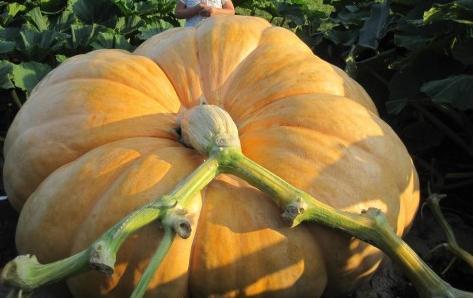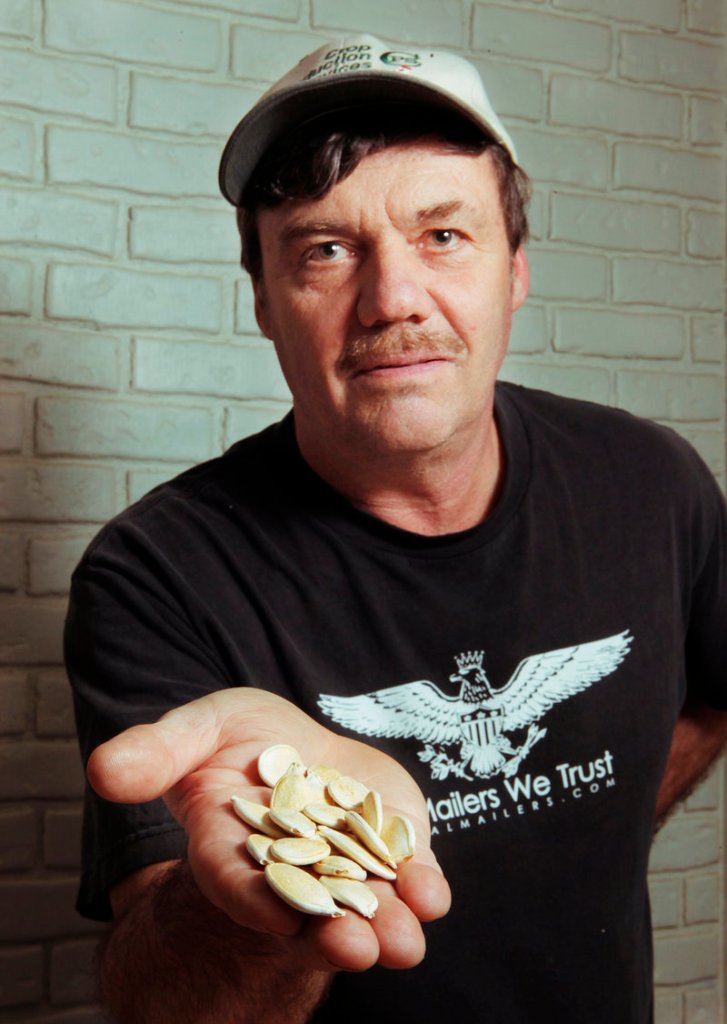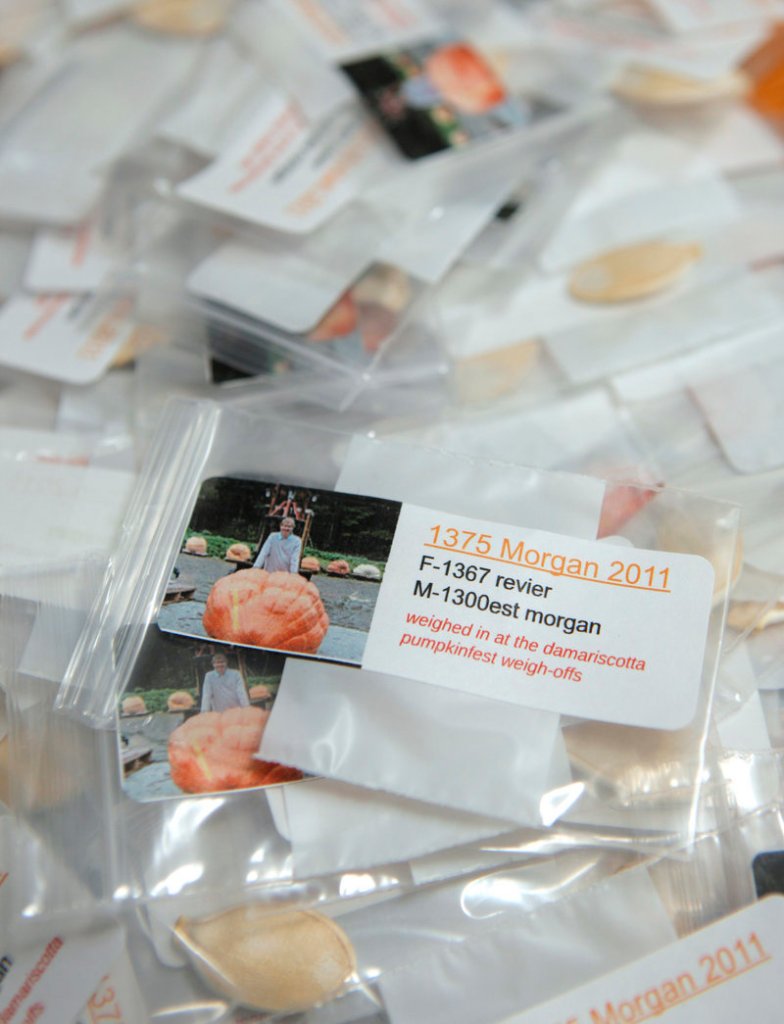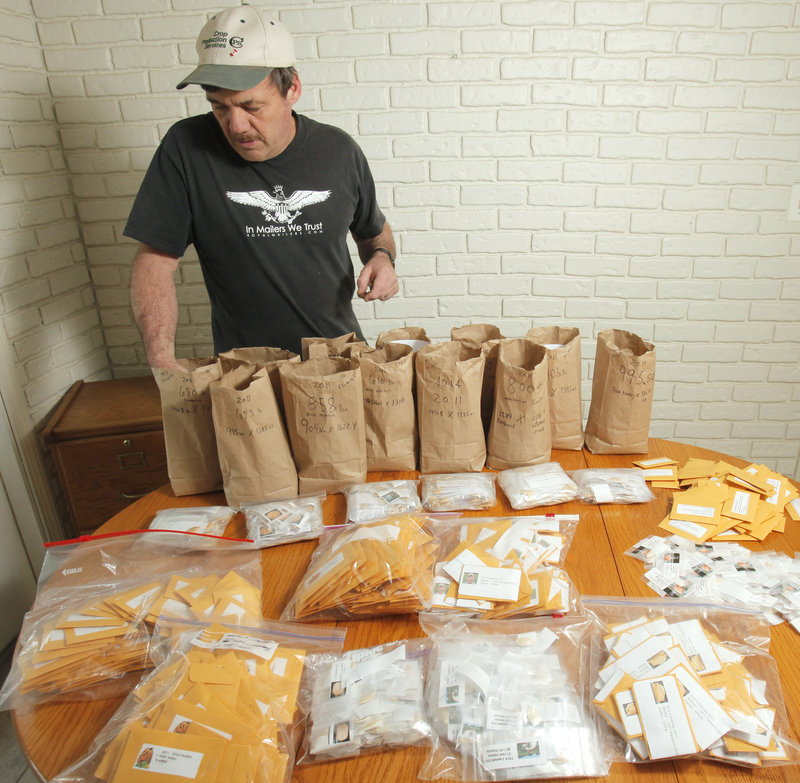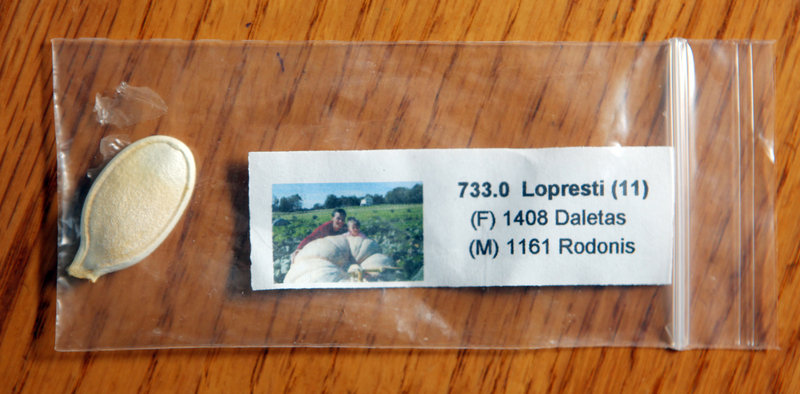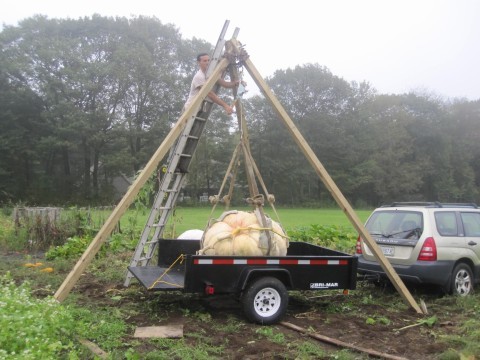To the casual giant pumpkin fan — those of us who gawk open-mouthed at 700-pound specimens on display at Maine fairs each fall — the appeal would seem to be simply the size.
“Wow, that’s a big pumpkin,” folks say approvingly to each other when they see the fair’s prize-winning behemoths.
But to talk to people who work hard to grow these giant pumpkins — and it is hard work — one gets the idea that the real fun is in how fast the big pumpkins get big.
“They are the fastest-growing fruit known, and during the peak of the season, they may gain 30 pounds a day,” said Al Berard of Sanford, president of Maine’s giant pumpkin club, the Maine Pumpkin Grower’s Organization, or MePGO. “It’s amazing to see how fast they grow.”
“That’s the most exciting thing,” says another club member, Charlie Lopresti of Buxton, meteorologist for Portland TV station WGME (Channel 13). “I’d check them before I go to work at 2 p.m., then when I came home after 11 p.m., I could see the difference.”
To get something to grow that fast, and that big — and to attract the kind of gawking giant pumpkins do — is not easy. And not a part-time, fair-weather activity.
This month, Berard has been logging hours sorting and labeling seeds from last year’s giants to send out to the club’s 120 or so members so they can mix and match seeds in their effort to grow this year’s giants. Berard said among giant growers, 500 pounds would be good for a first-timer. After 23 years, his best effort was more than 1,100 pounds.
The giant pumpkin season doesn’t really stop. It goes on all year long.
Last October, the giant pumpkin growers of MePGO entered their pumpkins at fairs and weigh-offs (sometimes the prize money is $1,000 or more), and then most displayed them at home until after Halloween.
In November, members were removing and drying the seeds from their biggest pumpkins. In December, Berard and another member, Tom Lishness, contacted club members and started asking for seeds.
Members then start sorting their seeds, picking out bad ones and labeling good ones. The labels contain important growing information like how big the pumpkin was, when it was grown, and what seed was used to grow it. Members are asked to send their seeds to Berard and Lishness by the end of January.
In February, Lishness and Berard take the best seeds from the biggest pumpkins and divide them up in packages for their members. Each member will get seeds from 15 to 18 pumpkins, and it’s up to them to decide which and how many they want to try to grow. Or they might just keep some of the seeds on hand for future use.
DILL DESERVES A NOD
Berard wants people to know that all giant pumpkins start with Dill’s Atlantic Giant seeds, developed by giant pumpkin pioneer Howard Dill of Nova Scotia. So all seeds that come out of giant pumpkins owe a debt to Dill.
Giant pumpkin growers will often go to fairs and weigh-ins, and will carefully read the labels of prize-winning pumpkins. Then they’ll go home to see if they’ve got one of those seeds.
“You might see a 1,200-pounder at the Sanford weigh-off, so you write down the seed that produced that pumpkin, then you go home and see if you have it. Because maybe it’ll grow a 1,200-pounder for you,” said Berard, 58, who is retired from the rigging department at the Portsmouth Naval Shipyard in Kittery.
This sharing of seeds and information shows that Maine’s giant pumpkin growers are a generous bunch. They are competitive, because they want to grow the biggest pumpkin, bigger than anyone else’s. But they are not so competitive that they would do anything to sandbag another grower’s pumpkin.
“With prizes being $1,000 or $2,000, things like that do happen,” said Lopresti. “I’ve heard of growers in other states that have been sabotaged.”
In March and April, the seeds get mailed out to members. Then growers germinate their seeds indoors, usually in March.
Berard plants his seed in a paper cup full of potting soil, then puts it in a cooler or box with a drop light, for both light and heat. He waters it twice a day for three to six days, until the seed sprouts.
Then he’ll move it to a larger container like a coffee can for a couple of weeks, putting the container on a windowsill by day and under fluorescent lights in the basement by night.
Hopefully, he’ll transfer the plant to his garden around mid-May. After that, it requires almost daily care, including watering, fertilizing and putting up stakes to support the plant.
In June or July comes the pollinating of the flower by hand — definitely not by bees. The pollen needs to be “100 percent pure” said Berard, so bees cannot be trusted.
The pumpkin plants have two flowers, Berard said. One has the pumpkin in it and is known as the “female” flower, while the other has a stem and is known as the “male” flower.
Growers have to watch the female flower carefully and be ready to do the pollinating on the morning it opens. After the female flower has pollen in it, it needs to be tied with string or rope so that bees or other contaminating elements don’t get in.
The pumpkin starts gaining enormous amounts of weight around August, and keeps growing until harvest time.
It requires time and dedication, but not necessarily a lot of experience. With good soil and a willingness to put in the time, there’s no reason a first-time grower can’t produce at least a 500-pounder in his or her first attempt, Berard said.
HELPING EACH OTHER OUT
Berard got involved with giants about 23 years ago, when his sons were young. They grew pumpkins for Halloween carving, and as they started looking around for seeds, they started seeing advertisements for seeds that would grow 300-pound pumpkins. Then he read about Howard Dill and how he basically developed the art of giant pumpkin growing in the 1970s. He was hooked.
In 2004, Berard was asked by another Maine grower, Bill Clark, to form a pumpkin club, and MePGO was born. The club welcomes new members, and is tentatively organizing a weigh-in event for first-time growers this year.
For the record, Berard’s biggest pumpkin weighed in at 1,182. The world record is 1,808.
The world record is broken almost every year, partially because so many more people are growing giants each year.
Pumpkins that big have to be lifted with a forklift — or a tractor, or a hauling tarp, or any number of inventive lifting devices. And that’s one of the biggest reasons to join the club — you can always asked another giant grower for advice or help.
“Especially with lifting, it’s not something you can do by yourself,” said Berard.
Staff Writer Ray Routhier can be contacted at 791-6454 or at:
rrouthier@pressherald.com
Send questions/comments to the editors.


